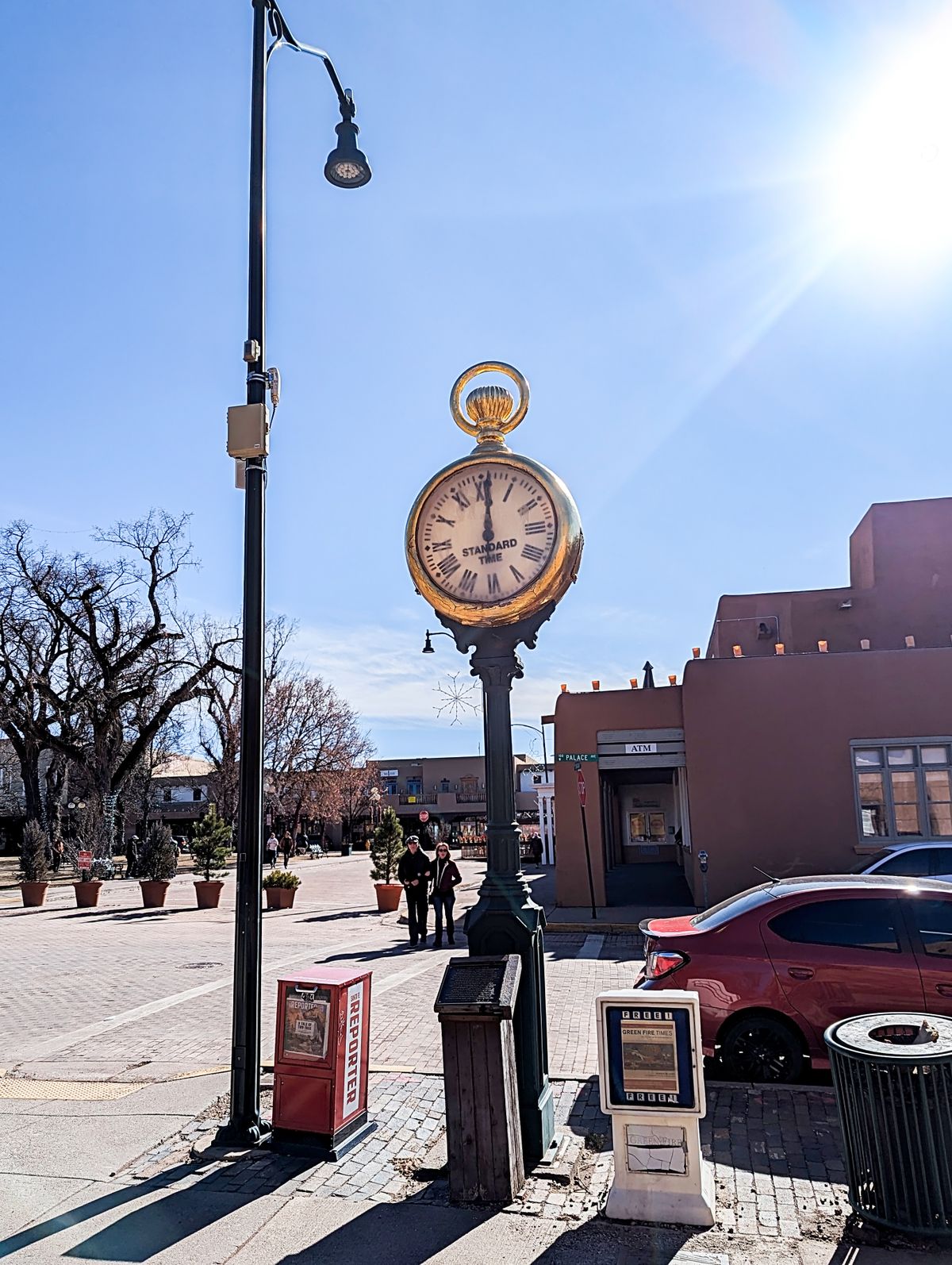About
When the Spitz Jewelry Store opened its doors in 1881, a giant pocket watch was the ideal advertising ploy. Would-be customers could spot the massive timepiece from a far away, but there was just one problem—it didn't actually tell time. Around the turn of the century, it was decided that a working clock might be a better idea, so the Spitz Clock was replaced with a functional version.
In 1915, people gawped when the first motor truck in the city drove around the plaza, but then there were shouts and screams as the driver struggled to control his four-wheeled machine. He crashed into the Spitz Clock, sending it timbering into the dust. Determined not to give up, jeweler Salamon Spitz purchased another working clock secondhand in Kansas City.
The new clock was also built by E. Howard and Company, whose outsized clocks were seen on city squares across America. This one is said to be the last clock with its original gears. All the others were converted to electricity, while this one still has to be wound. Visitors who listen closely might be able to hear the gears grinding inside.
This third clock avoided being melted down for scrap during World War II, and it stood outside the store for around 50 years until it was closed to make way for a new addition to the plaza in 1967. The clock stayed in storage for seven years until next-generation Bernard Spitz donated it to the city, and was erected just off the plaza at the corner of Palace and Lincoln Avenues in 1974.
Despite the glittery gold-leaf gilding and occasional restorations, the two faces look rather worn and dirty these days. Officials may debate about the expense of renovating, replacing, or simply donating it to the local museum. But for Santa Fe locals and tourists alike, it's a beloved landmark.
Related Tags
Know Before You Go
Located outside the New Mexico Museum of Art.
Published
October 1, 2021































